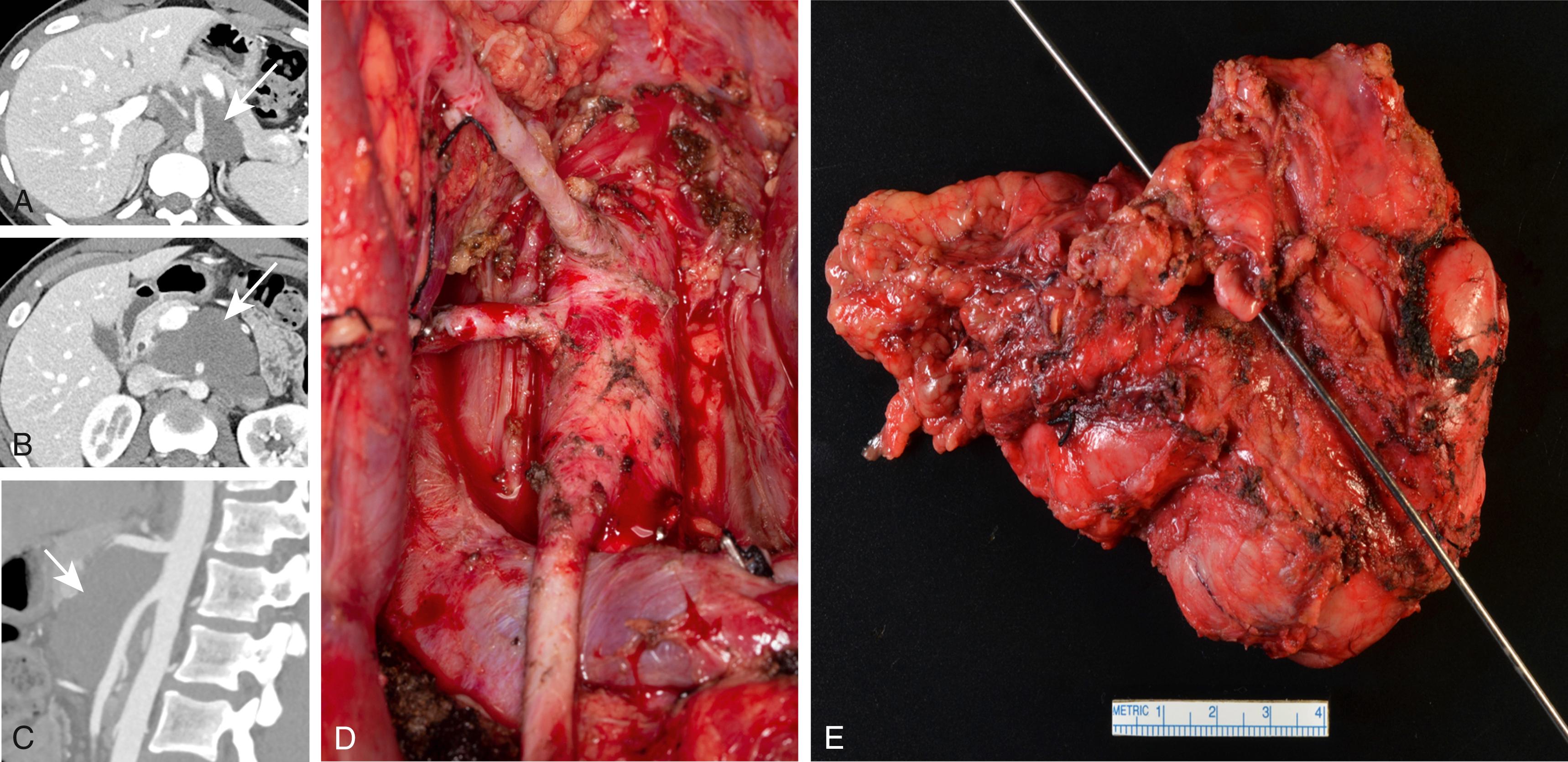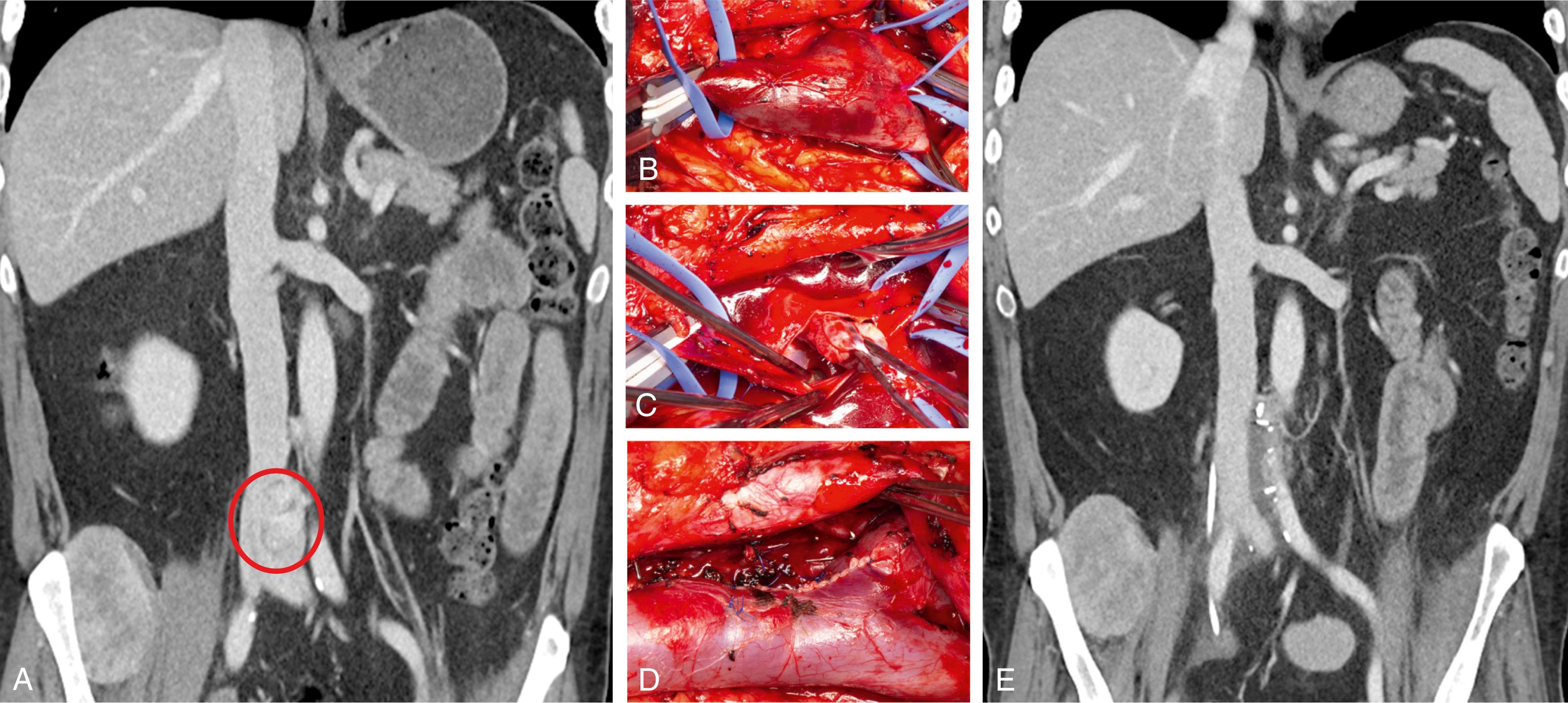Physical Address
304 North Cardinal St.
Dorchester Center, MA 02124
Over the past 20 years, surgical treatment of primary and secondary malignancies involving the arteries and veins has become more aggressive. This is due in part to careful patient selection, improvement in surgical techniques and critical care, and the lack of curative adjuvant therapies. Diagnosis is rarely made at an early stage in which surgical resection would be broadly applicable. This chapter reviews patient selection, surgical principles and management, and the technical aspects of resection and replacement of major central and peripheral arteries and veins.
Tumors of the arteries and veins are classified by their origin. In general, primary tumors arise from the smooth muscle of the media and rarely from the intima, except for aortic sarcoma. Primary aortic tumors are very rare, and usually classified by morphology and arterial layer of origin. Salm describes these tumors as polypoid or intraluminal, intimal, and adventitial. In contrast, Wright et al. classify the polypoid and intimal types as intimal tumors, and those of the adventitia as mural tumors. Polypoid intimal tumors grow intraluminally and have a propensity to embolize, whereas other intimal sarcomas are infiltrative, growing along the endothelial surface and may cause large vessel branch occlusion. Adventitial or mural tumors grow beyond the confines of the aorta and invade adjacent structures. The majority of aortic sarcomas are of the intimal type with equal distribution among the aortic segments. Staats and colleagues reported the clinicopathological features of 26 aortic and iliofemoral sarcomas. The abdominal (13 patients) and thoracic aorta (8 patients) were the most common sites. Interestingly, the diagnosis was not suspected clinically in any case. Prognosis is poor because of metastatic disease. Pathologically, the tumors were poorly differentiated in 13 patients and undifferentiated in 7. The other tumors secondarily invaded adjacent arteries, and included osteosarcoma, myxofibrosarcoma and myxoid sarcoma. Secondary arterial involvement also occurs with head and neck, lung, musculoskeletal, colorectal, pancreatic, gynecologic, and retroperitoneal carcinomas or sarcomas. At times, benign tumors such as ganglioneuroma encase the aorta or its branches ( Fig. 194.1 ).

Primary and secondary tumors of the superior and inferior vena cava (IVC) are shown in Box 194.1 . Primary tumors of the superior vena cava or peripheral veins are much less common than those of the IVC, , , with the former affected more by secondary malignancies. Venous leiomyosarcoma is the most common primary tumor (PVL), is more frequent than its arterial counterpart, tends to be polypoid or nodular, and growth is usually intraluminal. Aggressive PVLs invade through the adventitia and may involve adjacent organs. , PVL of the IVC represents one-third of surgical cases. Similar to aortic sarcoma, distant metastases occur early with primary IVC leiomyosarcoma, and are present in at least one half of patients at diagnosis. , , These factors adversely affect survival.
Primary leiomyosarcoma
Secondary SVC tumors
Lung cancer with mediastinal adenopathy
Lymphoma
Follicular or medullary thyroid cancer
Teratoma
Thymoma
Angiosarcoma
Synovial cell carcinoma
Secondary IVC tumors
Retroperitoneal soft tissue tumors
Liposarcoma
Leiomyosarcoma
Malignant fibrous histiocytoma
Hepatic tumors
Cholangiocarcinoma
Hepatocellular carcinoma
Metastatic (e.g., colorectal)
Pancreaticoduodenal cancers
Secondary IVC tumors that may have tumor thrombus
Renal cell carcinoma
Pheochromocytoma
Adrenocortical carcinoma
Sarcomas of uterine origin
Leiomyomatosis
Endometrial stromal cell
Germ cell tumors
Embryonal
Teratocarcinoma
Retroperitoneal sarcoma is the most common malignancy to invade the infrarenal IVC, but it can involve any caval segment. Bowel or solid organ cancers may invade the adjacent IVC segment. For example, cancers of the liver, pancreas, kidney, or adrenal glands can invade the suprarenal segment. Another form of a secondary malignancy is when the tumor grows through the draining vein into the IVC or SVC as tumor thrombus ( Fig. 194.2 ). Several cancers behave this way, with the most frequent being renal cell carcinoma (RCC). Approximately 4%–15% of patients with RCC have tumor thrombus which is limited to the renal vein–caval confluence in nearly half of this group, extends into the suprarenal IVC in 40% of patients, and involves the right heart in the remainder.

Become a Clinical Tree membership for Full access and enjoy Unlimited articles
If you are a member. Log in here